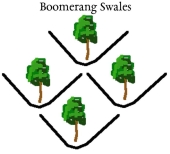posted 10 years ago
Hi Mark,
To add to what Joseph already shared, remember that soil "jar tests" are very, very basic guidelines of what a soil is presenting with. Many forms of silts and clays can have similar characteristics to one another...both in the jar and in the hand when physically testing them. Some silt will act almost exactly like a clay, and can be very deceiving. Without in depth soil analysis under a microscope and with the trained eye of a geologist or someone with similar training, we can only get a "guess" at what a soil has in it by the "jar test," and that may be more than enough in most applications.
If building with your samples, then I would strongly advise building "test block" and even a "test wall section" to better understand the load dynamics of a cobb type or related mix. Most states have "soil testing" for free or little money and this is also advised to take advantage of. Local universities will also often do this and even let you watch and learn something along the way...it can be really fun for younger members of the family as well and something they can share with others in school...
Something I have be meaning to add to one of these post about "jar test" is the subject of:
Sedimentation Principles
Sedimentation, for example when a river may slow in its course and form impoundments like "oxbow lakes," which is nothing more than a big bend in the old river, these rivers (moving water) slow and have less energy. With decreased energy, "sediment capacity" is dropped, and with it the "dropping of sediment." The first particles to settle will be the largest - the sands and gravels. This is one reason levees are built with sand as are other "emergency" structures are built with sand...or sandbags. The second largest particles are silts. Alluvial plains at the discharge point of many rivers is composed of silts. In many rivers if we put a sample in a jar to sit for a few hours, we would have a layer of soil appear on the bottom. Other than any sand that may have settled out quickly, this layer is composed of mostly of silts.
The third and smallest particles are the clays. Clays have a very weak electrical negative charges on their particle surfaces. They virtually never settle out of suspension, because of this characteristic, and being light structurally for their small particle size, plus they repel each other from having that like surface charges. Even if we put a sample away for an entire year, there are clay particles still in suspension. Depending on turbidity (agitation of jar sample) some clay types could actually take as long as 1000 years or more to fully settle. This reason alone, among several, is the reason the "jar test" is not overly reliable for testing clay types and qualities alone. Some (many?) clays will attached to silts or be trapped with them.
Regards,
j






 1
1
























 1
1




 Plus the liability and insurance issues for both us and the university may be why I never got call backs. The lab test are not that expensive and well worth the $$.
Plus the liability and insurance issues for both us and the university may be why I never got call backs. The lab test are not that expensive and well worth the $$. 











